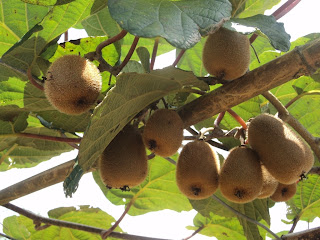 |
| An Indian mom-and-pop grocery store. |
I did my Fulbright research on fruit and vegetable purchasing in Delhi. But I was struck by how very different all food buying patterns are from those in the U.S.
In most Indian cities, almost everyone buys foods from the mom 'n' pop grocery stores embedded in streets--and sometimes homes--throughout the city. These stores range in size from a simple window hung with goods to an entire room complete with a counter and cash register. Instead of strolling through aisles of products and picking up products as you would in a supermarket, you walk up to a counter and make your request. No marketing consultants have been through here: Many items are so hidden in back corners and recesses that the store owner has to clamber up on a chair and search for them in the shelves.
When I go to the supermarket in the US, I'll usually browse the aisles and count on visual triggers to remember what I need ("Oh, yeah--we ARE out of flour"). I frequently end up buying more than I plan, whether it's because I notice that my favorite yogurt is on sale--got to stock up!--or see a new product I want to try.
In Delhi, I was far more likely to go to the store with a list of items to buy, ask for them, and then leave with exactly what I needed--and nothing more. On occasion I made impulse purchases, such as picking up a pack of gum at the counter, but I wasn't walking past every item in the store and was therefore far less likely to grab extras.
 |
| A small general store in one of Delhi's slums. |
Compared to the mom 'n' pop format, exposure to every product in the aisles of the supermarket encourages people to buy and consume more. Therefore, the predicted transition from mom 'n' pop grocery stores to supermarkets in India seems likely to increase consumption. This can’t be good for India’s growing epidemic of obesity.
But where are the nutritionists in the debate over changes in food retail in India? While there have been protests and political debates over how supermarkets will change supply chains and affect employment, no one mentions nutrition. I think that's a problem: We need to collect data on how the shift from mom ‘n’ pop stores to supermarkets will affect food buying patterns, and therefore nutrition. Then we need to use that data to inform food retail policy.





































